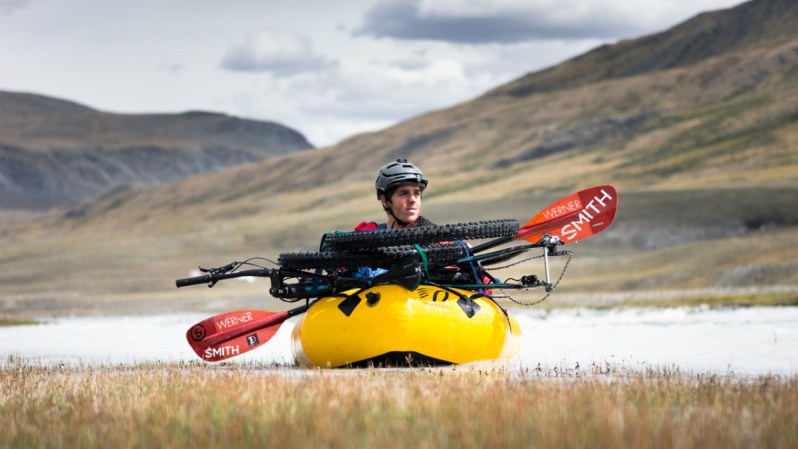
Calling all outdoor adventurers: Kokopelli, the Colorado-based company that has been cranking out innovative packrafts since its humble garage-based beginnings in 2014, is currently raising funds for its latest project: The Rogue Packraft. And judging by the response they’ve gotten so far, there’s no shortage of excitement over the new addition: with over three weeks left on the campaign, the project has already exceeded its $30,000 goal.
So, what is it about the new raft that had backers exceeding the company’s goal within the first 72 hours of their campaign launch? For starters, the Rogue Packraft will be equipped with a few trail-ready convenience factors: the entire vessel rolls up to approximately the size of a roll of paper towel and an included inflation bag means no lugging around a cumbersome air pump. Add in the raft’s incredibly light weight — The Rogue weighs in at 7.5 lbs, while it’s slightly slimmed-down counterpart The Rogue Lite weighs just under 5 lbs — and the one-person craft is perfect for tossing into your bag or tying around your bike’s handlebars.

If you’re an avid outdoorsman who has experience in the battle of transitioning from hike or bike to raft, you know that portability is a pretty big selling point all on its own — but that’s hardly all this raft has to offer. Over a year of research and development has resulted in an incredibly well-rounded vessel with TPU-coated nylon walls, a Kevlar-reinforced floor for extreme durability, and an inflatable seat cushion that lets you cruise in comfort. Opt for the upgraded Rogue with Tizip package and the rewards just keep on coming with an airtight zipper pocket that allows you to store gear inside the raft, a kayak-style backband, and a premium sprayskirt to keep you warm (and dry) out on the water.

Before backing any Kickstarter campaign, we’d advise you to review Kickstarter’s policies and do a bit of your own research to decide which projects you’d like to support. It’s true that Kokopelli has already met their initial goal, but true to form, they’re not stopping there: in response to the overwhelming support, the company has now set a new goal of $50,000 — if it’s met by the March 12 deadline, they’ll produce The Rogue in a second natural Olive color.


